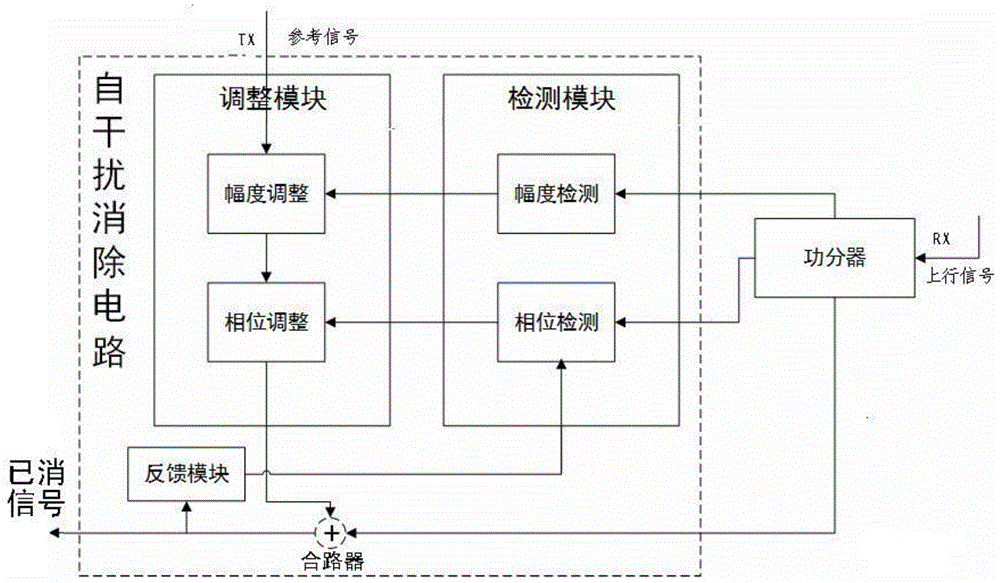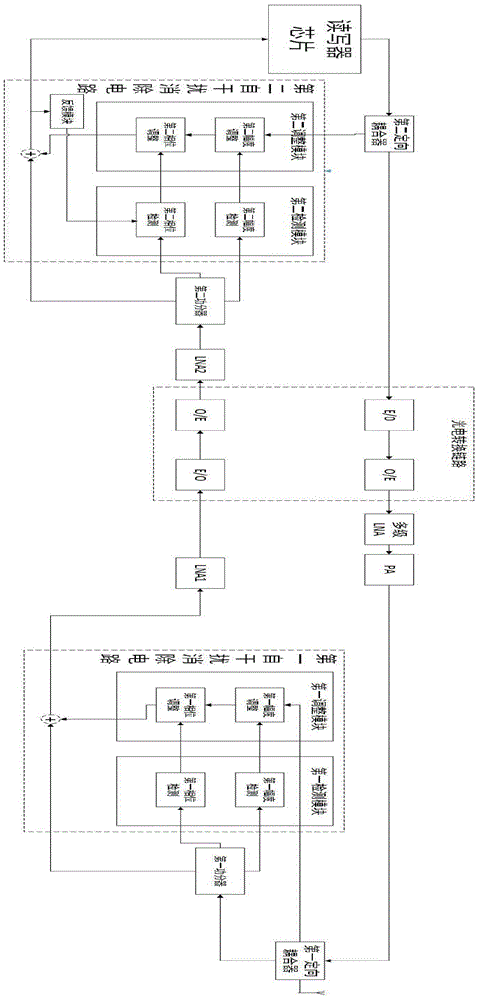High-receiving-sensitivity passive RFID system with optical link connection
A technology of receiving sensitivity and optical link, applied in the field of passive RFID system, can solve the problems of small identification tag range and low identification accuracy, etc.
- Summary
- Abstract
- Description
- Claims
- Application Information
AI Technical Summary
Problems solved by technology
Method used
Image
Examples
Embodiment 1
[0067] Embodiment 1, due to the addition of an optical link in the system, the input range of the optical link has certain requirements, and the optical link will also have a corresponding attenuation of the signal during transmission, so we are using the optical link In the process, a self-interference cancellation circuit is added to ensure the receiving sensitivity of the system, such as figure 2 shown.
[0068] Depending on the application, the figure 2 The shown self-interference elimination circuit is placed in different positions of the optical link to form different optical link structures.
[0069] Passive RFID systems with high receiving sensitivity connected by optical links with self-interference cancellation circuits at both ends, such as image 3 As shown in , it is applied to scenarios where the remote antennas are widely distributed, the number of tags is large, and the surrounding environment is relatively complex.
[0070] The function of the self-interf...
Embodiment 2
[0071] Embodiment 2, this embodiment provides a digitally controlled self-interference elimination circuit, such as Figure 4 shown.
[0072]The self-interference cancellation circuit is divided into four parts: detection module, adjustment module, feedback module and buffer. The detection module includes: an amplitude detection module, a phase detection module, and a control center. The adjustment module includes: an amplitude adjustment module and a phase adjustment module. The basic principle is: the uplink signal is input to the power divider, and the power divider divides the uplink signal into three paths, one path of large-amplitude signal is input to one of the inputs of the combiner, and the other two paths of small-amplitude signals are respectively input to the detection module In the amplitude detection module and phase detection module. Since the self-interference signal is much larger than the reflected tag signal in the uplink signal, the detection module is ...
Embodiment 3
[0076] Embodiment 3, the digital control provided by the present invention has a self-interference elimination circuit with a specific structure, such as Figure 6 shown.
[0077] Passive RFID systems with high reception sensitivity connected by optical links with digitally controlled self-interference cancellation circuits with specific structures at both ends, such as Figure 7 As shown, there are three points of difference between the two ends in application:
[0078] 1. The near-end elimination effect is better than the far-end effect. Due to the limited space of the remote module and the large number of remote modules, in order to save costs, the remote self-interference cancellation module uses the simplest circuit form to eliminate the self-interference signal to a large extent, and the purpose is to make the uplink After the signal undergoes attenuation in the optical link, the back-end reader chip can still identify it. The near-end self-interference cancellation c...
PUM
 Login to View More
Login to View More Abstract
Description
Claims
Application Information
 Login to View More
Login to View More - R&D
- Intellectual Property
- Life Sciences
- Materials
- Tech Scout
- Unparalleled Data Quality
- Higher Quality Content
- 60% Fewer Hallucinations
Browse by: Latest US Patents, China's latest patents, Technical Efficacy Thesaurus, Application Domain, Technology Topic, Popular Technical Reports.
© 2025 PatSnap. All rights reserved.Legal|Privacy policy|Modern Slavery Act Transparency Statement|Sitemap|About US| Contact US: help@patsnap.com



